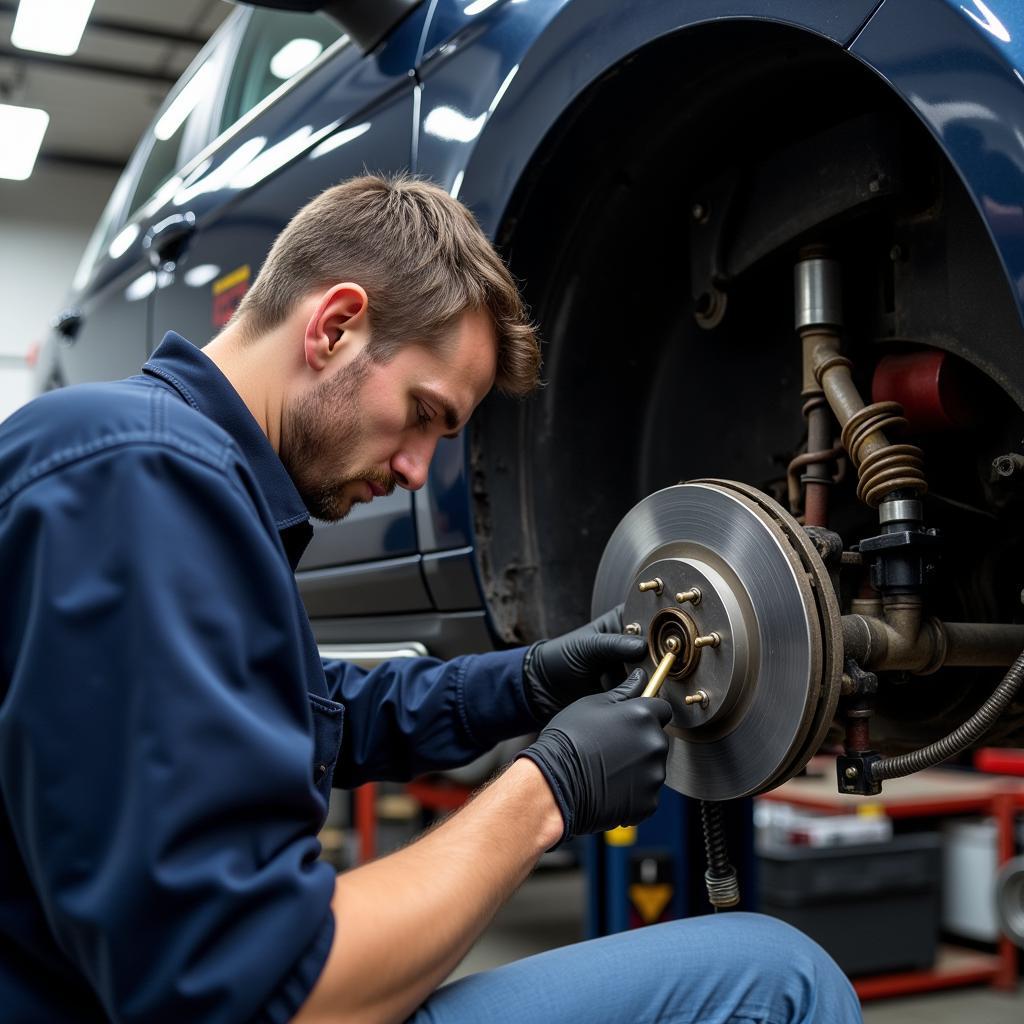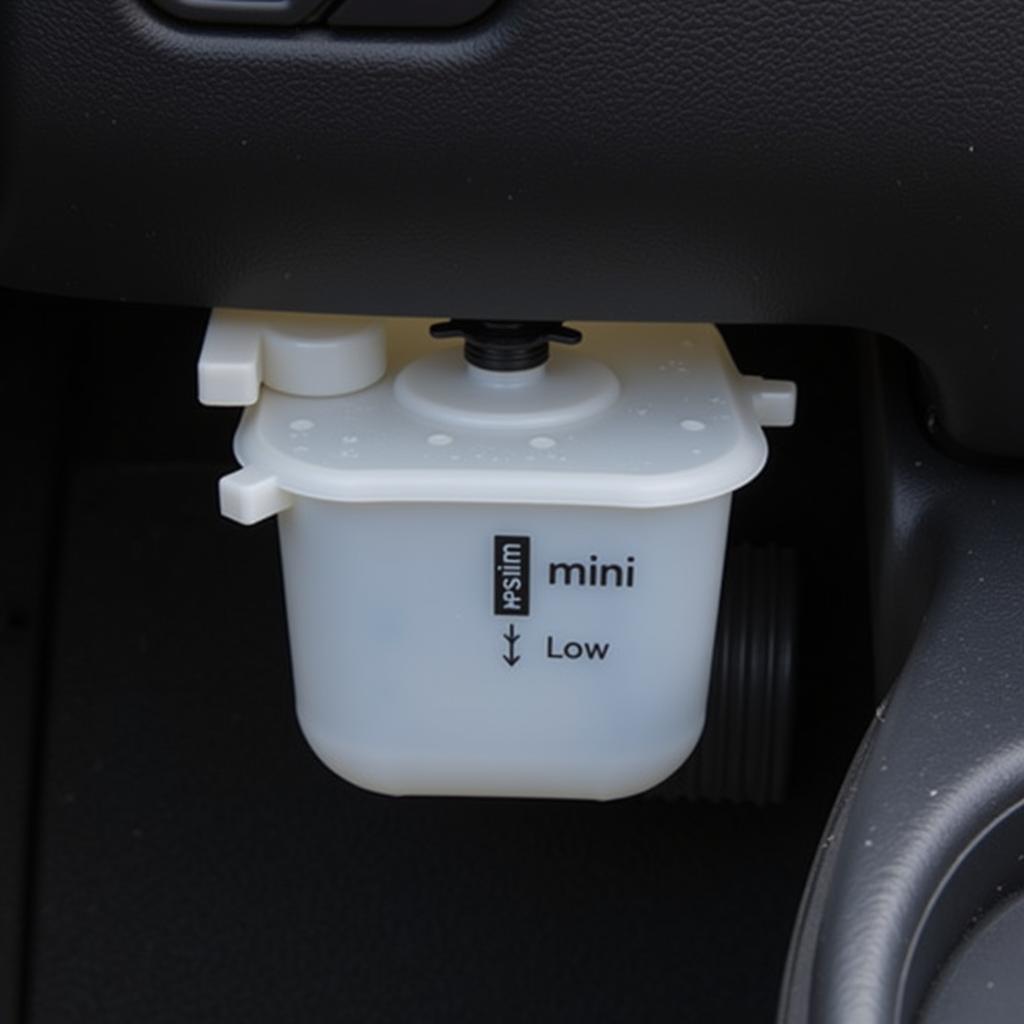The ESP (Electronic Stability Program) warning light on your Seat Alhambra dashboard can be a cause for concern, but it doesn’t always signal a major problem. This comprehensive guide will delve into the common causes of this warning light and provide potential solutions to help you get back on the road safely.
Understanding the ESP System
The ESP system in your Seat Alhambra is a crucial safety feature that helps maintain stability and prevent skidding during cornering or slippery conditions. It works by monitoring wheel speed, steering angle, and lateral acceleration. If the system detects a loss of traction, it automatically applies brakes to individual wheels and adjusts engine power to help you maintain control.
Common Causes of the ESP Warning Light
The ESP warning light on your Seat Alhambra can illuminate for various reasons, ranging from minor sensor issues to more serious problems with the system’s components. Here are some of the most common culprits:
-
Faulty Steering Angle Sensor: The steering angle sensor determines the position of your steering wheel. A malfunctioning sensor can send incorrect data to the ESP control unit, triggering the warning light.
-
Defective Wheel Speed Sensor: Each wheel on your Seat Alhambra has a speed sensor that transmits data to the ESP system. A faulty sensor can disrupt the system’s ability to monitor wheel speed accurately, leading to the warning light.
-
Brake Light Switch Issue: The ESP system is interconnected with your brake lights. A malfunctioning brake light switch can interfere with the ESP’s functionality, causing the warning light to come on.
-
Low Battery Voltage: Like many electronic systems in your car, the ESP relies on a stable voltage supply. A weak or dying battery can disrupt the system’s operation.
-
Problem with the ESP Control Unit: In some cases, the ESP control unit itself may malfunction. This is a more complex issue that often requires professional diagnosis and repair.
Troubleshooting the ESP Warning Light
Before rushing to a mechanic, there are a few troubleshooting steps you can try yourself:
-
Check Your Brake Lights: Ensure all your brake lights are working correctly. If you notice any issues, replacing the brake light switch might solve the problem.
-
Inspect Battery Connections: Visually examine the battery terminals for any signs of corrosion or loose connections. Clean the terminals and tighten the connections if necessary.
-
Check for Diagnostic Trouble Codes (DTCs): If you have access to an OBD-II scanner, you can read the diagnostic trouble codes stored in your car’s computer. These codes can provide valuable insights into the specific area of the ESP system that’s experiencing issues.
When to Seek Professional Help
If the ESP warning light persists even after trying the basic troubleshooting steps, it’s crucial to seek professional assistance. A qualified mechanic with experience in Seat vehicles can accurately diagnose the problem using specialized equipment and recommend the appropriate repair.
“Ignoring a persistent ESP warning light can compromise your safety on the road,” says John Miller, a seasoned automotive electrician with over 20 years of experience. “Modern ESP systems are complex and interconnected with other critical safety features. It’s always best to err on the side of caution and have a professional diagnose the issue.”
Preventing ESP Warning Light Issues
While not all ESP problems are preventable, regular maintenance can significantly reduce the likelihood of encountering this warning light:
-
Regularly Check Your Battery: Ensure your battery is in good condition and holding a proper charge. Replace it if it’s nearing the end of its service life.
-
Inspect Brake System Components: During routine maintenance, have your mechanic check the condition of your brake pads, rotors, and calipers.
-
Address Warning Lights Promptly: Ignoring any warning light on your dashboard can lead to more significant problems down the line.
 Mechanic Inspecting the Brake System of a Seat Alhambra
Mechanic Inspecting the Brake System of a Seat Alhambra
Conclusion
The ESP warning light on your Seat Alhambra shouldn’t be ignored. Understanding its potential causes and taking the appropriate steps to address the issue will ensure your safety and keep your vehicle running smoothly. If you’re unsure about any aspect of diagnosing or repairing the problem, don’t hesitate to consult a qualified mechanic specializing in Seat vehicles.

